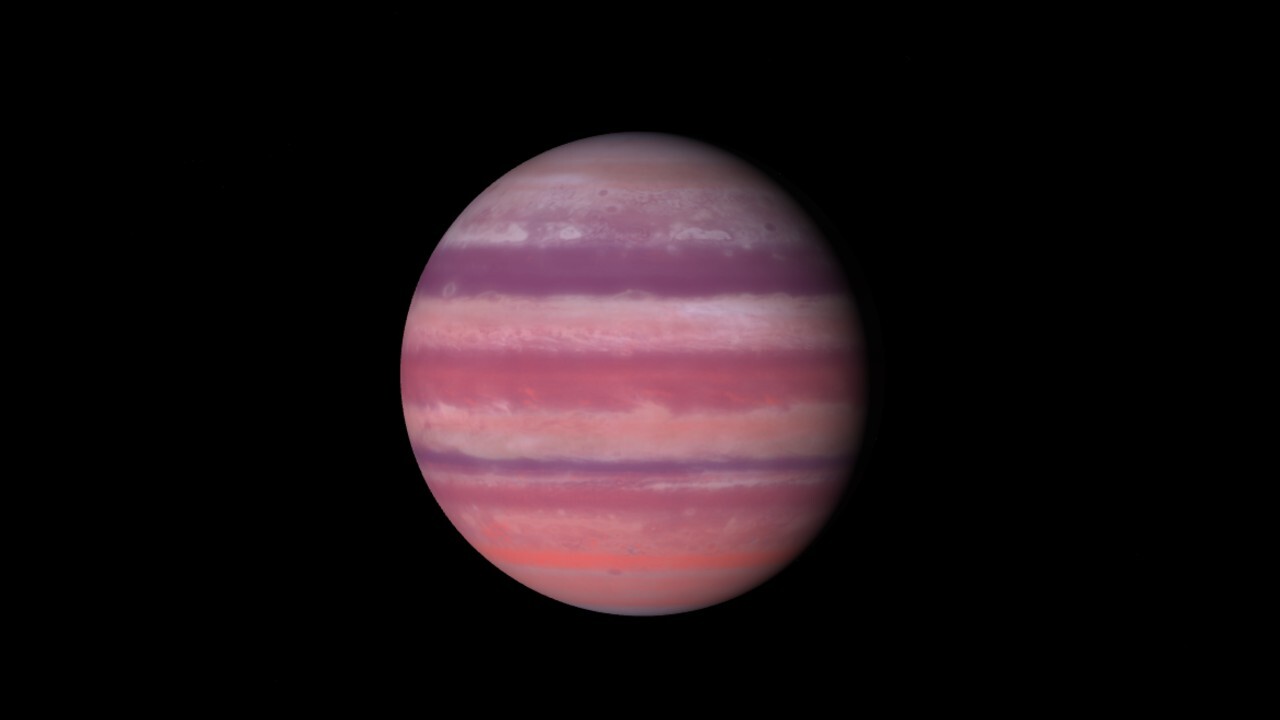Astronomers discover giant alien planet 35 times more massive than Earth hiding in a known star system
"It remains possible that there are other unseen planets in the system. The challenge is finding them!"

Scientists have detected a hidden alien planet by examining the orbits of the known worlds in the star system, known as Kepler-139.
The newfound exoplanet, called Kepler-139f, is a gigantic world roughly twice the mass of Neptune and 35 times the mass of Earth, and it takes 355 days to orbit its star, astronomers reported in a study published May 2 in The Astrophysical Journal Letters. Despite its giant size, Kepler-139f had evaded detection.
That's because the initial yield of NASA's Kepler space telescope, which discovered nearly 3,000 planets in its nine years of operation, relied on worlds transiting — passing between their star and Earth. The resulting dimming of the star allowed astronomers to identify planets and calculate their size. But Kepler couldn't see planets traveling above or below the wedge of space between it and the star, so any outliers remained unseen.
But if the hidden world was part of a multiplanet system, astronomers could try to find it despite its inclined orbit. Kepler-139 has three rocky transiting super-Earths; a fourth gas giant was later discovered. Gaps in their orbits suggested that other worlds might be present. Precise measurements of the orbits allowed the astronomers to infer the existence of at least one more planet.
"The issue is not exactly finding non-transiting planets, but rather, finding situations in which we can deduce where the non-transiting planet is located," Caleb Lammers, a graduate student in the Department of Astrophysical Science at Princeton and co-author of the study, told Space.com by email.
Discovering Kepler-139f
Kepler's initial identification of a world was often followed up by observations from the ground. Using radial velocity (RV), astronomers could measure how much a planet tugged on its star, allowing them to determine the planet's mass. RV measurements could also reveal new worlds, as happened with the outermost gas giant, Kepler-139e.
At the same time, each planet is pulled by not only its star but also by other planets in the system, regardless of whether that planet can be seen from Earth. These pulls can affect how swiftly a planet transits, thus creating "transit timing variations" (TTVs). These variations in the transiting planets can reveal worlds that don't cross the star.
Breaking space news, the latest updates on rocket launches, skywatching events and more!
"When you observe TTVs that cannot be attributed to the known planets, you can be fairly confident that there is an unseen body in the system," Lammers said.
Lammers and his colleague Joshua Winn, a participating scientist on the Kepler team and co-author of the study, went looking for gaps in known systems. Then, they used both RV and TTV measurements to hunt for a missing world, revising existing TTVs based on the 2023 discovery of Kepler-139e.
"What was different in the case of Kepler-139 is that we had precise radial velocity observations which did not conclusively point towards a new planet on their own," Lammers said. Combined with the TTVs, the observations revealed a fifth planet, Kepler-139f, tucked between the outermost super-Earth and the gas giant.
The new discovery also helped to answer a question about Kepler-139e. The original reports of Kepler-139c, the outermost super-Earth, provided an unusually large density for a sub-Neptune-size planet.
The discrepancy occurred because those authors didn't know about Kepler139f, so they had attributed some of its pull on its star to Kepler-139c. The new data suggest a more typical density for Kepler-139c while leaving the densities for Kepler-139d and Kepler-139b essentially unchanged. These revisions provide indirect evidence for Kepler-139f, Lammers said.
There may even be other hidden worlds around Kepler-139. "It remains possible that there are other unseen planets in the system," Lammers said, pointing to the prominent gap between planets b and c. "The challenge is finding them!"
Hidden worlds
Both Kepler and NASA's more recent exoplanet hunting mission, the Transiting Exoplanet Survey Satellite (TESS), were sensitive to planets orbiting closer to their star. These inner worlds were more likely to make many transits, allowing scientists to confirm the planet's existence. But transiting planets with wider orbits made only a handful of passes, so they were more challenging to observe and confirm.
At the same time, the RV method tends to be biased toward larger planets, because the more massive a world is, the stronger it tugs on its star. Proximity helps; the pull of the planet is amplified to the square inverse of its distance. Thus, a planet twice as far away will have only one-fourth the gravitational pull. That's why many of the first discovered exoplanets were Jupiter-size worlds that circled their star in only a few days.
All of these factors make it harder to discover smaller planets that are farther away, particularly if they don't transit their star. But by combining transits, RVs and TTVs, astronomers can find smaller, hidden worlds orbiting farther from their star.
"It is likely that many planetary systems host unseen worlds, especially in their outer regions," Lammers said.
But soon, it will be harder for those worlds to hide. In 2026, the European Space Agency will launch its Planetary Transits and Oscillations of Stars (PLATO) mission, which will conduct its own survey of transiting planets, as well as revisit Kepler's field. In providing additional transit times for planets detected by Kepler more than a decade later, PLATO will improve measurements of TTVs to enable the discovery of more misaligned worlds.
"In the coming years, the TTV planet detection technique will probably be accelerated dramatically by the PLATO mission," Lammars said.

Nola Taylor Tillman is a contributing writer for Space.com. She loves all things space and astronomy-related, and always wants to learn more. She has a Bachelor's degree in English and Astrophysics from Agnes Scott College and served as an intern at Sky & Telescope magazine. She loves to speak to groups on astronomy-related subjects. She lives with her husband in Atlanta, Georgia. Follow her on Bluesky at @astrowriter.social.bluesky
You must confirm your public display name before commenting
Please logout and then login again, you will then be prompted to enter your display name.
